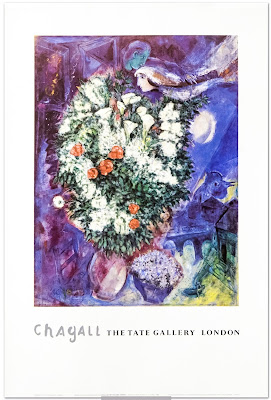The Artistry of Claude Monet: A Personal Reflection on "Le bassin aux nymphéas"
As an artist, I find profound inspiration in the works of those who have laid the foundation for modern expression. Claude Monet, a luminary of the Impressionist movement, stands out as a transformative figure whose revolutionary use of color and light has indelibly shaped my understanding of art. His renowned masterpiece "Le bassin aux nymphéas" (1919) serves as a testament to his genius. It embodies his lifelong devotion to capturing the natural beauty surrounding his home and garden in Giverny, France.
Claude Monet's Inspiration and Focus
Monet's "Le bassin aux nymphéas," which translates to "The Water Lily Pond," is an integral piece within an extensive series of water lily paintings that I often return to for inspiration. What captivates me is the remarkable dedication Monet displayed in painting his garden during the latter years of his life, a time fraught with deteriorating eyesight and ongoing health challenges. These adversities did not stifle his creativity but intensified his desire to reflect on the beauty surrounding him. As my own life begins to meander toward the end, I often ponder the spiritual nature of art, and I find myself fiercely dedicated to painting only beauty. I like to imagine that Monet strolled through the gardens contemplating the same divine puzzles that I work on, and these were his inspirations in painting some of the most beautiful art he created.
In creating "Le bassin aux nymphéas," Monet dedicated countless hours to rendering the ephemeral qualities of light, water, and flora. His ability to blend these elements into a lush canvas speaks volumes about his artistic commitments and provides a unique lens through which to reflect on the natural world. I am particularly drawn to how he balances mesmerizing light with the chaotic fluidity of color. The painting invites viewers into a realm that transcends traditional representation, offering many perspectives that shift through varying layers of brushwork. The colors in this piece are undeniably striking, ranging from vibrant greens and blues to the delicate pinks and purples of the water lilies, culminating in a composition that invites the observer to lose themselves in its serene landscape.
Significance of Color, Light, and Brushstrokes
In my exploration of Monet's work, especially "Le bassin aux nymphéas," I find it imperative to acknowledge his mastery of color and light. This painting epitomizes the sensation of being enveloped within the serene atmosphere it portrays. Each brushstroke he employed contributes to an emotional palette rather than merely an aesthetic one, forging a deep connection with viewers who yearn for tranquility amid chaos. The manner in which Monet's brushwork dances across the canvas captivates me; it draws the eye and evokes a feeling of harmony that encourages introspection and a deeper connection with nature.
Monet's fluid and spontaneous brushstrokes simulate the gentle ripples on the water's surface, bringing the scene to life and prompting a contemplative interaction with the natural environment. I often marvel at how he captures the essence of light as it flickers and dances on the pond, leading to an almost hypnotic quality. The dynamic visual experience created by these techniques transcends mere representation. It reminds me of the importance of emotion and instinct in artistic expression. As an artist, I am continuously inspired to explore how to channel similar feelings through my brushwork and color choices.
Historical and Cultural Context
To fully appreciate "Le bassin aux nymphéas," one must consider the historical and cultural context in which it was created. Painted in 1919, this work emerged during an era of significant personal and global turmoil. World War I had not only ravaged entire continents but had also deeply impacted Monet. His art became a refuge through which he could express his grief over the loss of loved ones and his urgent desire for peace in a world marked by chaos. Understanding this context enriches our appreciation of the painting and the artist's intent.
In my study, I am particularly struck by how his carefully curated garden in Giverny served as a sanctuary and an artistic muse during this tumultuous time. Monet's unwavering dedication to his garden—obsessively tending to the plants, flowers, and water lilies—stands as a tribute to resilience. It embodies the notion that even amid adversity, one can find inspiration in the beauty of nature. This dedication is a vital lens through which to appreciate the painting: it is not solely an artistic achievement but a manifestation of Monet's unwavering connection to the environment around him despite the physical limitations he faced.
Reception and Legacy
The lasting impact of "Le bassin aux nymphéas" on the art world cannot be overstated. It has inspired countless contemporary artists who seek to explore the boundaries of color and light in their own works. I find it fascinating that the painting was sold for an astonishing $74 million at a recent auction at Christie's in New York. This figure reflects not merely its monetary value but a testament to its continued relevancy in the modern art dialogue. Monet's innovative spirit, as evidenced in "Le bassin aux nymphéas," not only marked a significant departure from traditional fine art but also acted as a catalyst for the broader evolution of modernism.
As I contemplate Monet's legacy, I see that he has risen as one of the most influential figures in art history. Certainly one of the most influential for me. – Shel St Clair




Comments
Post a Comment